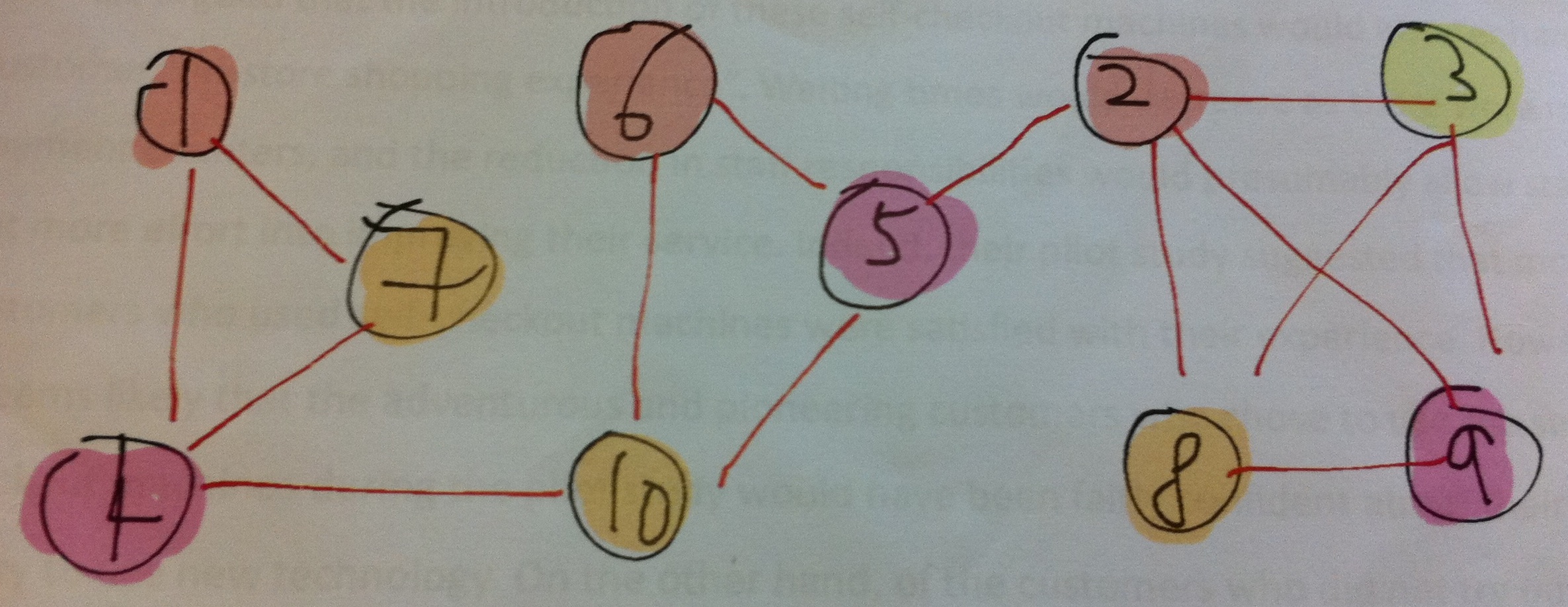
Note: If you graph is "messy", you can "move" your vertices around so that you can "see" a less cluttered graph.
T1-D4: (Tourist Problem) -- conflict generation --- SOLUTION SKETCH
(a) 6 tourists will introduce 15 edges.
Why? Many different explanations:
T1-D5: [Tourist Problem] -- Algorithm (Discussion)
Actually, we did not get to discuss this in class.
Later in the course, we will discover that, as of today, all scientists (CS, Math, Physicists, Engineering, etc) in the world still do not have a good algorithmic solution to this problem. At least, nothing that is substantially better than the try all possible solutions, and choose a best one type algorithm. But these algorithm take forever to run (reference: T5-Q5).
T1-Q1: (10 points) [Origami and Computing] -- (Outcome!)
View the photos of your Origami on UIT2201 Facebook page at
here.
T1-Q3: (10 points) [Job Scheduling Problem] -- SOLUTION SKETCH
(a)
Model with an undirected graph (with vertices and edges).
The vertices represent (model) the jobs
The edges represent (model) the time conflicts
-- connect two vertices x and y if the corresponding jobs
Jx and Jy
overlaps in time, namely,
share a common time duration.
Then, we get the graph shown below (courtesy of Kristen):

Note:
If you graph is "messy", you can "move" your vertices around so that you can "see" a less cluttered graph.
(b) Graph can be coloured using 4 colours.
So, the jobs can be assigned to 4 workers.
(Note: There are many ways to colour the graph, so if you
used 5 colours, try other ways to colour so you need only 4!)
T1-Q4: (10 points) [Tourist Problem. The Good and the Bad] -- SOLUTION SKETCH
(a) 2. How? Many ways actually. One simple way is to have
everyone visit the same two places. Then it is trivially done in 2 days.
But people can visit different places and still complete in 2 days.
However, the general condition is more complicated.
A1: Actually, this should really be T1-Q4 (b).
6.
Here, we try to make as large a clique as we can with each tourist creating a different edge. With 20 students, we can make 20 edges.
We can get cliques of size 6 (15 edges), but not of size 7 (21 edges).